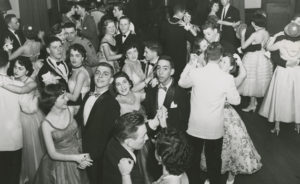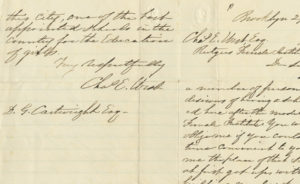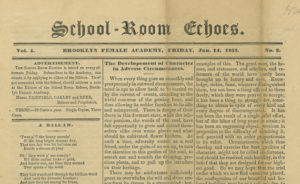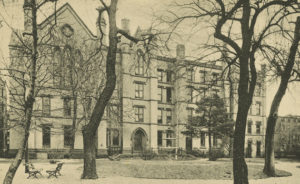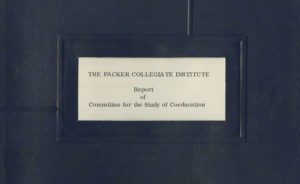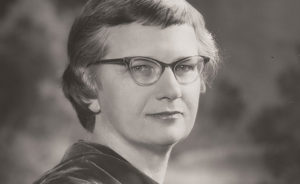The Packer Collegiate Institute: A Story of Education in Brooklyn
The “New Woman” Pedalling Away from Propriety
Theo Eagle
As it was my first time doing archival research, I decided that it would be fun to dive straight into some of Packer’s oldest archival sources. Was that a good idea? Initially, overtaken by a feeling of doubt and apprehension, I found myself asking this question rather frequently, but after a lot of research and hard work, I feel confident answering that question with a resounding, heartfelt, “Yes!” My research commenced when I flipped through student publications, such as the class of 1895’s “Packer Fagots,” which was filled with curious advertisements promoting everything from corsets to banjo lessons. The most common advertisements, however, were those of “the wheel,” or “bicycles,” as we call them today. As I looked through different publications, I found more and more bicycle advertisements; each of them quite beautiful in design, with intricate drawings and beautiful lettering and, for the most part, directed at a female reader. I wondered: “What could have been going on in the world outside of Packer’s walls that there needed to be so many cycling advertisements lining the back pages of student’s publications from an all female school?”

New York Times (1857-1922): “WOMEN AND CYCLING,” Image, Feb 07 1897. ProQuest.
Reading secondary sources taught me that the 1890’s, labelled the “gay 90’s” at the time, marked the emergence of the Great Bicycle Boom, or “Craze” in the United States. Shortly after the “safety bicycle” came to America, almost every person in the United States wanted a bicycle of their own. Not only was the bicycle a revolutionary means of transportation, it was also stylish and accessible. Perhaps this is what lead to the bicycle’s immense popularity among women at the time. For the first time in what must have felt like forever, women had the opportunity to leave the house and be self reliant in getting around in a way that was liberating and fun. The bike quickly became a vehicle of freedom: a symbol of “new women.” These were affluent white women who wanted not to be seen as merely a housewife, but as a strong, educated, member of society who fought for freedom against the rigid societal expectations that had been in place for years. One of these women was a Fanny Oakey of Brooklyn Heights, whose daughter, Frances Oakey, graduated from Packer in 1896.

“Ladies Columbia,” Class of 1895, “Packer Fagots”; Packer Collegiate Institute records, 2014.19, Box 130; Brooklyn Historical Society.
According to The New York Times, Fanny Oakey was the first woman to ride a bicycle in New York City. As the leader of a very popular tricycle club in Brooklyn Heights, and as a highly respected doctor of medicine, when Oakey abandoned her tricycle and took to “the wheel,” many women followed in her footsteps including her own daughter, Frances Oakey. Together, they would ride fearlessly through the streets of Brooklyn and turn their heads away from insults being hurled from the sidewalks by onlookers, as they loved the sport and encouraged other women to take part in it as well. However, not all women were as courageous and determined as the Oakeys and these individuals looked for approval from their husbands, brothers, and fathers. There were both men and women at the time who were extremely opposed to, or even condemned the sight of a woman on a bicycle because it was thought that they were abandoning their “ladyhood” to participate in a sport which promoted “devilish” tendencies, such as masturbation, and potentially hurt female organs.

“608 Pongee,” Class of 1895, “Packer Fagots”; Packer Collegiate Institute records, 2014.19, Box 130; Brooklyn Historical Society.
How could the introduction of an object into popular culture cause such a stir among the public? This was the question I kept asking myself as I finished my paper, and unsurprisingly, there is no succinct answer to my question. I now realize that I was investigating the relationship between consumerism and freedom and what that relationship meant for women during the late nineteenth century. Did women feel that they had to rely on consumership to attain the freedom that they rightfully deserved? Today, this question still stands. So many products are geared specifically toward women, making them feel like they have to buy the skin care product, the makeup, or the clothing, that will allow them to fit into today’s modern beauty standard. Maybe in the 1890’s, bicycle companies sold their bicycles to cater to a similar standard, but regardless, the bicycle had a profound impact on women’s rights, especially in Brooklyn Heights.
May 2017
